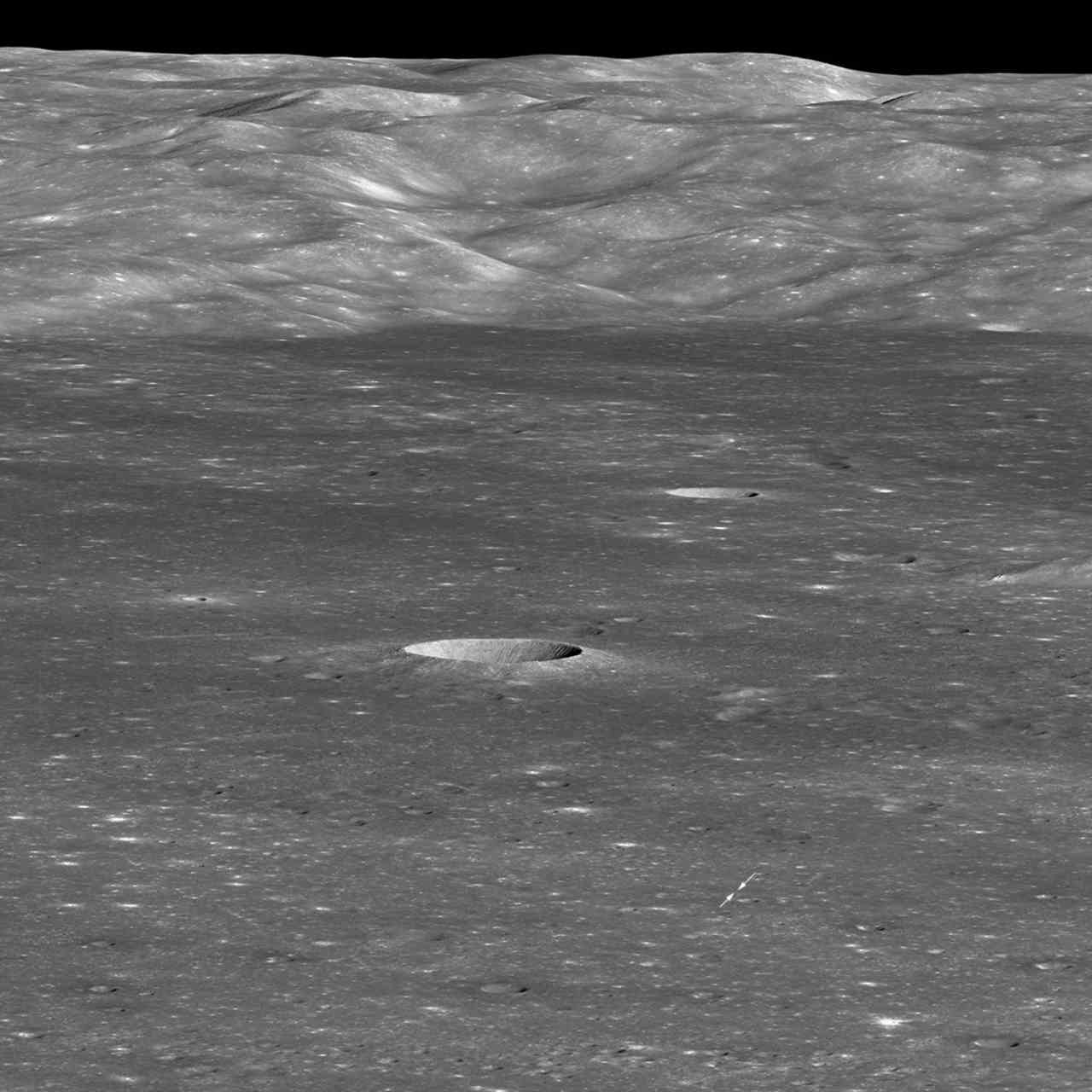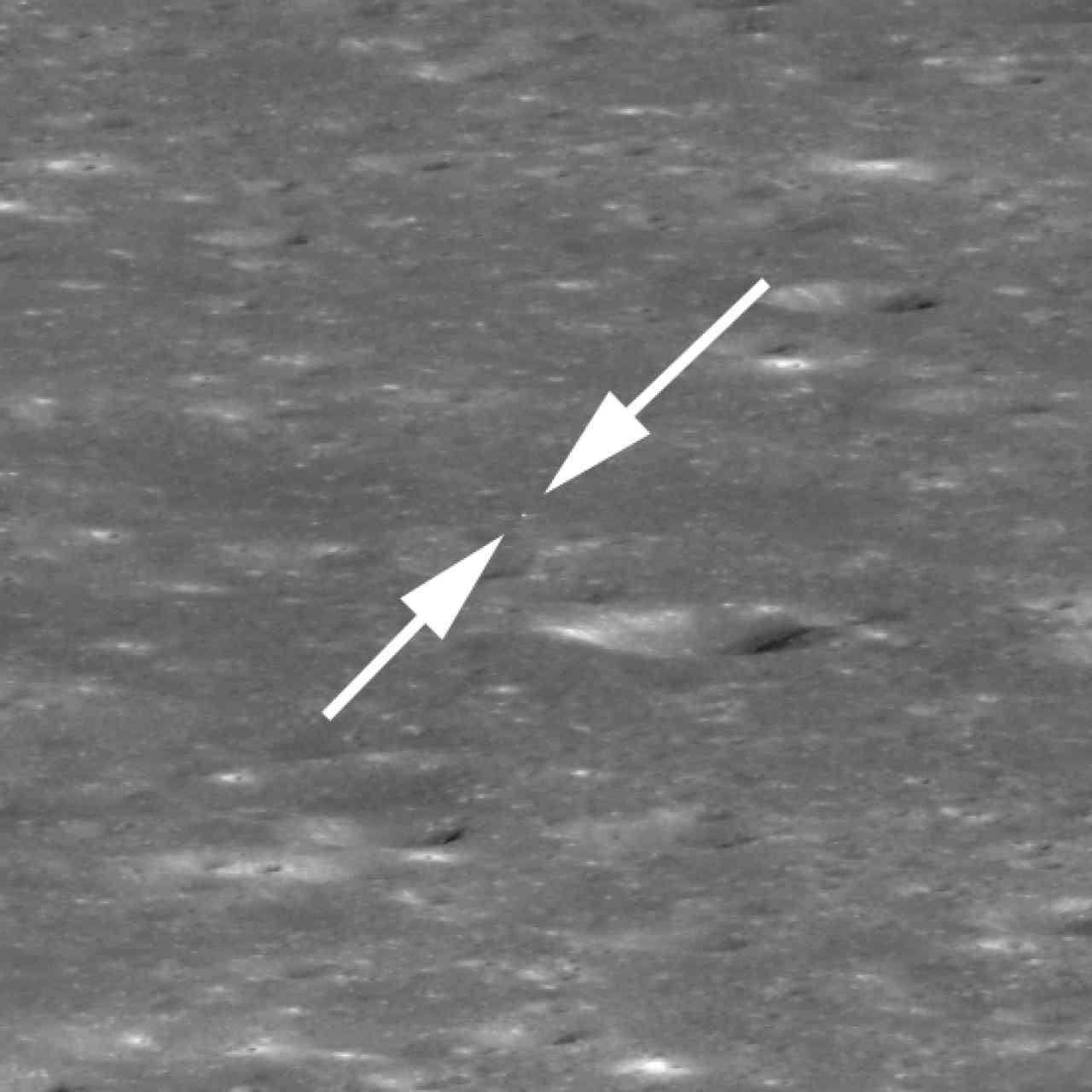One of NASA’s robotic moon-studying robots has caught a glimpse of China’s historic Chang’e-4 probe. On 3 December 2018,
Chang’e-4
became the first mission in the world to make a soft landing on the far side of the moon — which has rarely been photographed, let alone explored — in the previous moon missions. NASA’s
Lunar Reconnaissance Orbiter
(LRO), which has been mapping the moon’s surface in great detail since 2009, captured the Chinese lander in action as it passed overhead on 30 January. [caption id=“attachment_6044111” align=“alignnone” width=“1280”] NASA’s LRO spots the Chang’e-4 mission on the moon. Arrows show the position of the Chang’e 4 lander on the floor of Von Kármán Crater in this image captured on 30 January 2019. The sharp crater behind and to the left of the landing site is 3.9 kilometres wide and 600 meters deep. Image credit: NASA[/caption] The LRO was programmed to tilt towards the landing site of Chang’e-4 in the
Von Kármán Crater
, a massive
impact crater
in the southern hemisphere on the Moon’s far side. While the orbiter captured the lander on the moon’s surface, the mission’s
Yutu-2 rover
dodged detection. The
Chang’e-4 mission’s lander and rover
carry a bunch of
different scientific instruments
to study the unexplored surface of Von Kármán Crater and a few inches below it. [caption id=“attachment_6044091” align=“alignnone” width=“1280”]
NASA’s LRO spots the Chang’e-4 mission on the moon. Arrows show the position of the Chang’e 4 lander on the floor of Von Kármán Crater in this image captured on 30 January 2019. The sharp crater behind and to the left of the landing site is 3.9 kilometres wide and 600 meters deep. Image credit: NASA[/caption] The LRO was programmed to tilt towards the landing site of Chang’e-4 in the
Von Kármán Crater
, a massive
impact crater
in the southern hemisphere on the Moon’s far side. While the orbiter captured the lander on the moon’s surface, the mission’s
Yutu-2 rover
dodged detection. The
Chang’e-4 mission’s lander and rover
carry a bunch of
different scientific instruments
to study the unexplored surface of Von Kármán Crater and a few inches below it. [caption id=“attachment_6044091” align=“alignnone” width=“1280”] NASA’s Lunar Reconnaissance Orbiter captured this view of the Chang’e 4 lander on 30 January 2019 from overhead. Image credit: NASA[/caption] The lander also carried with it an experiment in biology — climate-controlled
canisters with fruit-fly eggs and a variety of plant seeds
, including cotton. The cotton seeds sprouted
, becoming the first non-human living things to have made it to another celestial object (except the microbes that hitch-hiked on NASA’s Apollo spacecraft to the moon). Unfortunately, the
cotton seedling sprouted just in time to freeze
during the mission’s first experience of nighttime on the moon (these last two Earth weeks!). Without sunlight to power the mission, the lander and its operations were put to sleep to prevent any cold-damage. This exposed the canisters and seedlings to the
harsh negative 190-degree temperatures
on the moon’s surface, which killed the tiny (and famous) seedling in an instant. However, the Chinese mission continues towards its real objective undeterred: to understand what makes the
moon’s near and far sides
so very different
from each other.
NASA’s Lunar Reconnaissance Orbiter captured this view of the Chang’e 4 lander on 30 January 2019 from overhead. Image credit: NASA[/caption] The lander also carried with it an experiment in biology — climate-controlled
canisters with fruit-fly eggs and a variety of plant seeds
, including cotton. The cotton seeds sprouted
, becoming the first non-human living things to have made it to another celestial object (except the microbes that hitch-hiked on NASA’s Apollo spacecraft to the moon). Unfortunately, the
cotton seedling sprouted just in time to freeze
during the mission’s first experience of nighttime on the moon (these last two Earth weeks!). Without sunlight to power the mission, the lander and its operations were put to sleep to prevent any cold-damage. This exposed the canisters and seedlings to the
harsh negative 190-degree temperatures
on the moon’s surface, which killed the tiny (and famous) seedling in an instant. However, the Chinese mission continues towards its real objective undeterred: to understand what makes the
moon’s near and far sides
so very different
from each other.
NASA's lunar orbiter spots China's Chang'e-4 lander on the Moon's far side
tech2 News Staff
• February 7, 2019, 14:29:17 IST
The LRO captured the lander on the moon’s surface, but the Yutu-2 rover dodged detection.
Advertisement
)
End of Article